You may not realize it, but there’s a hidden hormone lurking inside you.
Hiding in the shadows, it continues to multiply and build up within your cells.
At the same time, it’s ruining your health on many levels, including:
- Suppressing your thyroid gland…
- Damaging your metabolism…
- Causing Hashimoto’s thyroiditis…
- Burdening your liver…
- Promoting cancer…
- Driving autoimmune diseases…
- Contributing to heart disease…
- And more.
It’s there and it’s dangerous, but you probably don’t know it.
This hormone is none other than estrogen.
Today, I want to share a 3-Step Plan that I use with my clients to correct issues of excessive estrogen and estrogen dominance.
Whether you’re a man or a woman, young or old, it doesn’t matter.
Dangerously high levels of estrogen are being found more and more commonly in men today.
If you’re a woman (or man) and you’ve had your estrogen levels tested, then I hate to be the bearer of bad news…
…but you can’t accurately measure estrogen by blood work.
It’s highly inaccurate.
Why?
Because estrogen doesn’t accumulate in your blood.
It accumulates and hides in your tissue, where it does its damage.
Studies, such as the one below, show that tissue concentrations of estrogen are often 50+ times higher than in the blood.
The endogenous concentration of estradiol and estrone in normal human postmenopausal endometrium. https://www.ncbi.nlm.nih.gov/pubmed/6513559 “The mean E2 concentration in tissue was 420 pg/g, 50 times higher than in plasma and the E1 concentration of 270 pg/g was 9 times higher.”
This is a common mistake my clients make all the time.
They send me their lab work claiming that their estrogen is “low”.
Then I look at the 10+ symptoms that all scream “estrogen dominance”, and we have to come to grips with reality.
This is also why Hormone Replacement Therapy (HRT) is so dangerous.
Think of the millions of women being pumped full of estrogen when their tissue concentrations are already extremely high.
Think of the number of women that have died due to HRT without anyone knowing it.
It’s real and it’s scary…
…and it’s ruining your thyroid and immune system in more ways than one.
The Hidden Hashimoto’s Hormone
Hashimoto’s thyroiditis (otherwise known as autoimmune thyroiditis) is one of the, if not “the”, most common form of hypothyroidism today.
It’s hypothyroidism, but with an immune component caused in large part by prolonged exposure to excessive estrogen.
In hypothyroidism your body is unable to detoxify estrogen efficiently, causing estrogen to build up in the body and become excessive.
This excessive estrogen blocks thyroid function and drives hypothyroidism in a number of ways, including:
- Inhibiting the proteolytic enzymes that allow your thyroid gland to release its thyroid hormone, directly blocking your thyroid gland.
- Blocking your liver from converting inactive T4 thyroid hormone into the active T3 thyroid hormone your cells need to survive.
- Blocking your metabolism and preventing you from using thyroid hormone efficiently.
This excessive estrogen also drives the autoimmune component of Hashimoto’s as well.
Studies, such as the one below, show that prolonged exposure to this excessive estrogen is what leads to the rise of the anti-TPO antibodies commonly used to diagnose Hashimoto’s…
2-Methoxyestradiol, an endogenous estrogen metabolite, induces thyroid cell apoptosis. http://www.ncbi.nlm.nih.gov/pubmed/10940494 “Prolonged exposure to 2-ME led to apoptosis and to increased release of the autoantigen thyroid peroxidase (TPO).”
This is why so many thyroid sufferers develop Hashimoto’s thyroiditis.
Estrogen quickly accumulates inside your body if you’re left improperly treated. This leads to the prolonged exposure to estrogen that drives Hashimoto’s.
So, what can we learn from our extremely high incidence of Hashimoto’s thyroiditis?
It goes to show you just how backwards and ineffective thyroid treatment today really is.
Yet, it doesn’t end with Hashimoto’s thyroiditis…
The Hidden Cause of Autoimmune Disease
While estrogen is largely responsible for the high incidence of autoimmune thyroiditis, it’s also largely responsible for the development of many other autoimmune diseases.
It all comes down to your thymus gland, which sits right behind your breastbone.
Your thymus gland serves an important role in maturing your immune T-Cells and helping to regulate your immune system.
Yet, estrogen is well known for causing damage to, and shrinking, your thymus gland.
Estrogen induces thymic atrophy by eliminating early thymic progenitors and inhibiting proliferation of beta-selected thymocytes. https://www.ncbi.nlm.nih.gov/pubmed/16751381 “We have found that daily i.p. injections of the synthetic estrogen 17-beta-estradiol reduce thymus cellularity by 80% over a period of 4-6 days.”
More specifically, estrogen has been shown to increase the production of auto-immune antibodies while inhibiting your immune system from properly handling them.
Below are a handful of common autoimmune diseases known to involve excessive estrogen:
- Arthritis
- Hashimoto’s thyroiditis
- Multiple sclerosis
- Sjögren’s syndrome
- Lupus
While estrogen is responsible for so many devastating health effects, correcting excessive estrogen is sometimes easier said than done.
The 3-Step Approach to Correcting Excessive Estrogen
We already know that hypothyroidism leads to excessive estrogen.
Yet, there are many very poor and illogical recommendations out there that more often than not cause more harm than good.
The only way to fully address excessive estrogen and estrogen dominance is through the following three steps.
Step 1: End the Aromatase Estrogen Overproduction
Most people associate estrogen as a “female” hormone produced only by the ovaries.
Yet, in hypothyroidism and Hashimoto’s, estrogen is over-produced by the aromatase enzyme.
Aromatase is an enzyme found largely in your fat cells that converts androgens, like testosterone, into estrogen.
Other factors that increase aromatase include:
- Age
- Cortisol
- Low-Carb Dieting
- Polyunsaturated fatty acids (PUFAs)
- Alcohol
- Prolactin
- Prostaglandin
- Removal of the Ovaries
In hypothyroidism, both the increased amount of aromatase and the increased activity of the enzyme largely contribute to the problem of excessive estrogen.
Menopausal women continue to produce larger amounts of estrogen through aromatase, even when their ovaries produce little.
With clients, we most often correct this aromatase issue with the use of two safe, natural, and extremely powerful aromatase-inhibitors.
The first is our molecular progesterone oil.
The second is our High Gamma Vitamin E Complex. In fact, High Gamma Vitamin E is so effective that it is shown to decrease estrogen levels by 55% in 10 weeks.
Dietary tocopherols inhibit cell proliferation, regulate expression of ERα, PPARγ and Nrf2, and decrease serum inflammatory markers during the development of mammary hyperplasia https://www.ncbi.nlm.nih.gov/pmc/articles/PMC3374909/ “Serum E2 levels were significantly reduced by the treatment with 0.5% γ-TmT.”
Some studies indicate maximum effectiveness from 2,500 mg daily.
Step 2: Stop Storing and Start Detoxifying Your Estrogen
Preventing the over-production of estrogen is the obvious first step.
Yet, most hypothyroidism and Hashimoto’s sufferers still can’t detoxify the estrogen that’s already stored in their tissue.
Your liver naturally detoxifies estrogen by attaching glucuronic acid and excreting it through your urine.
Aside from hypothyroidism itself, there are a number of factors that prevent you from detoxifying estrogen, including:
- Estrogen
- Polyunsaturated fatty acids (PUFAs)
- Endotoxin
- Protein deficiency
- Carbohydrate deficiency
With clients, we strongly focus on improving estrogen detoxification through a number of ways.
We always start with the elimination of dietary PUFAs as well as lowering the PUFAs in our blood and tissue.
Then we must feed the liver all the adequate nutrition it needs to do its job.
This starts with a minimum of 70 to 100 grams of high quality protein, and even more carbohydrates, especially from fructose.
One or two raw carrots daily helps prevent estrogen from being reabsorbed.
Finally, we further boost thyroid hormone (T3) through diet and/or supplement a high quality thyroid hormone supplement, such as our Forefront Health Raw Desiccated Thyroid.
Step 3: De-Activate Estrogen and Block Estrogen Receptors
Regardless of your true estrogen levels, you also have to account for the “activity” of your estrogen.
For example, lower estrogen levels with higher estrogen activity can be more damaging than higher estrogen levels with lower estrogen activity.
Ideally, we want lower estrogen levels with lower activity.
There are many factors that influence your estrogen’s activity, including:
- Inflammation
- Polyunsaturated fatty acids (PUFAs)
- Number of estrogen receptors
As mentioned previously, we detoxify estrogen by attaching glucuronic acid, which inactivates the estrogen.
Keeping inflammation low is extremely important as inflammation increases the production Beta-glucuronidase, which removes the glucuronic acid and re-activates the estrogen.
Another way your body inactivates estrogen is by attaching sex hormone-binding globulin (SHBG).
Normally SHBG helps reduce estrogen’s activity by attaching to it and preventing it from entering your cells.
However, PUFAs in your blood stream bind to SHBG, preventing it from de-activating estrogen.
Finally, the effects, or activity, of estrogen depends largely on the number of estrogen receptors at the tissue level.
In hypothyroidism and Hashimoto’s, large numbers of estrogen receptors amplify estrogen’s dangerous effects.
By blocking and eliminating estrogen receptors you can further decrease the activity of estrogen.
Similarly to their estrogen lowering effects by inhibiting the aromatase enzyme, both progesterone and Vitamin E also work by directly blocking estrogen receptors.
As you can see, fixing your estrogen dominance requires the use of all three of these steps.
Focusing on one without the others is a common mistake I see many thyroid sufferers make.
You don’t need potentially dangerous supplements like DIM or I3C to do it.
There are safe, natural, and even more effective options available.
But, this isn’t something that you can continue to ignore or leave untreated.
It’s one of the biggest missing pieces to the hypothyroidism puzzle that most people never figure out…
…and by doing so, is leaving you at risk of developing Hashimoto’s thyroiditis and other autoimmune diseases.


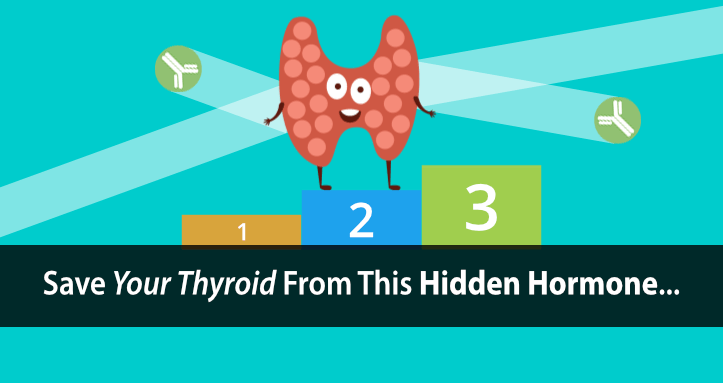
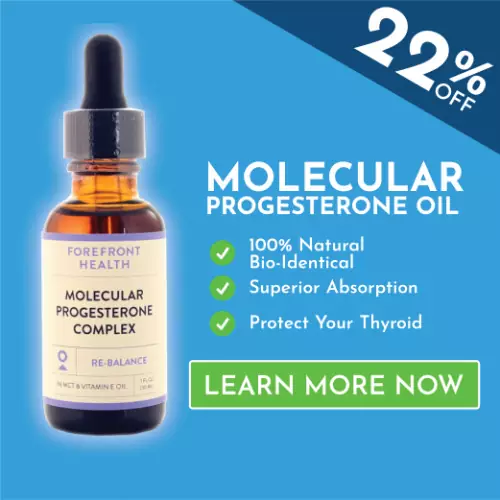
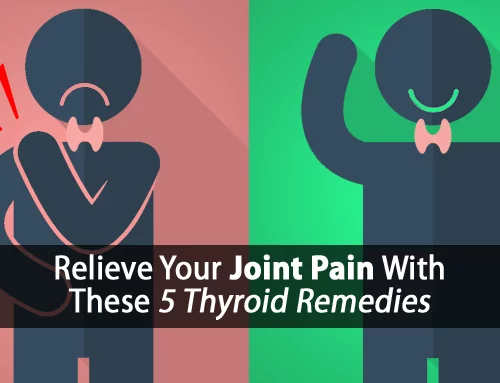
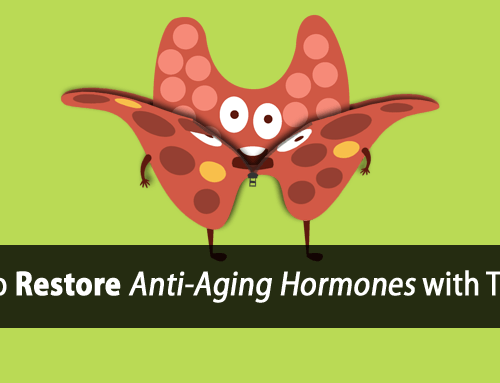
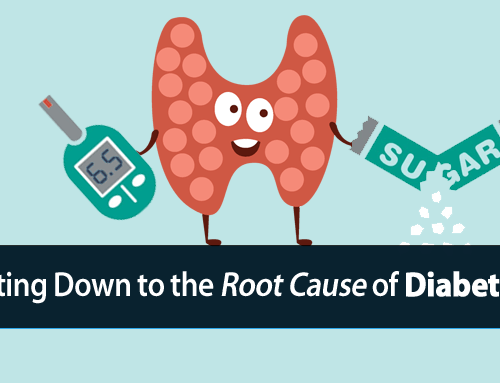
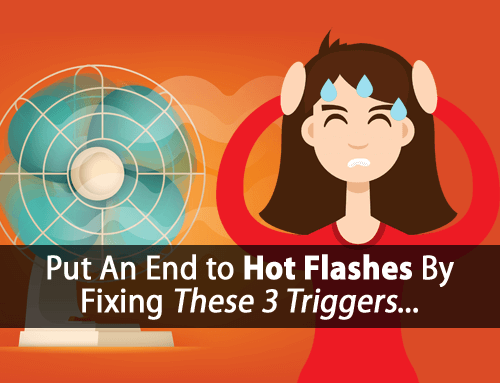
Granted I skimmed the article but I don’t see mention of your preferred method to check hormone levels. I have mine done through saliva. What is your opinion on saliva hormone testing?
Hi Kolleen, it depends on the hormones, but I don’t recommend saliva either. Sometimes we’ll test for other hormones that ARE present in the blood that tend to be elevated along with estrogen (like prolactin and serotonin) to get a more accurate estimation of estrogen levels. Regardless, hypothyroidism functionally leads to estrogen dominance. So, labs (if accurate) tend to only validate what we already know.
Why is DIM dangerous?
Hi Linda, I don’t recommend using I3C or DIM because they also have their own negative effects such as inhibiting metabolism and ATP production. They also promotes oxidative stress.
Hi, how do I use thyroid glandular and progesterone if I have Hashimoto’s?
Hi Qian, the specifics on how we use this for Hashimoto’s is covered in detail in our Hypothyroidism Revolution Program. You can learn more about that here: https://www.forefronthealth.com/programs
Due to hysterectomy I’ve been on Estrogen for hot flashes for years – but a very low dose. If I follow your suggestions will I have to deal with “hot flashes”?
Estrogen is well known for suppressing the vasomotor symptoms associated with menopause. Yet, it comes at the cost of many negative side effects that most are unaware of. For example it activates the stress response, suppresses metabolism, and directly block the thyroid gland.
When working with clients we prevent these vasomotor symptoms by supplementing adequate progesterone. Research also shows this provides the same symptomatic relief without the negative side effects. Plus it’s very pro-thyroid.
Progesterone for hot flush and night sweat treatment–effectiveness for severe vasomotor symptoms and lack of withdrawal rebound.
http://www.ncbi.nlm.nih.gov/pubmed/22849758
“In summary, progesterone is effective for severe VMS and does not cause a rebound increase in VMS when stopped. That progesterone may be used alone for severe VMS and unlike estrogen does not appear to cause a withdrawal rebound increases VMS treatment options.”
Very interesting read, I have hasimoto’s and estrogen dominance. I have just started taking milk thistle and globe artichoke to help with this. Thanks for the article it has shed some light on my issues.
Thank you Tom I find your information easy to understand and follow. I have benefited alreadyvfrom A,D,K drops thanks Di
Hi Tom, thanks for this helpful article. When one supplements with Progest E is it that necessary to also supplement with the Gamma E complex? Just wondering what the difference is. TIA
Hi Kate, they don’t have to be used together, but do have some synergistic effects when both are used together. They both serve different purposes as well.
Hi Kate, the progesterone we use does contain vitamin E, which is uses to deliver the progesterone directly into the bloodstream. However, it doesn’t contain an adequate amount for therapeutic purposes, which is why we use the Vitamin E Complex separately.
Hi Tom, thank you for very interesting article.
I follow a lot of your advice lately and I have a question about your opinion on taking Progesterone Oil.
Do you think it is necessary to avoid all chemical and man-made estrogens in our environment to be able to diminish and/or eliminate estrogen dominance? Is it necessary to change our cosmetics? Household products we use? Etc. Thank you
Hi Petra, it’s best to avoid environmental estrogens as much as possible. In hypothyroidism, when the liver can’t detoxify them, they become far more dangerous.
How about Saw Palmetto?
Polyunsaturated fatty acids (PUFAs)- Complicated Subject
Tom,
Thanks for another great article. PUFA’s are in many of the foods we are told to eat because they have healthy fats- such as olive oil and nuts.
So, what is your recommendation with this?
]
Food source (100g) Polyunsaturated fat (g)
Walnuts 47
Canola Oil 34
Sunflower seeds 33
Sesame Seeds 26
Chia Seeds 23.7
Unsalted Peanuts 16
Peanut Butter 14.2
Avocado Oil 13.5 [25]
Olive Oil 11
Safflower Oil 12.82[26]
Seaweed 11
Sardines 5
Soybeans 7
Tuna 14
Wild Salmon 17.3
Whole Grain Wheat 9.7
Would this also include healthy algae’s such as spirulina and chlorella?
http://butterbeliever.com/what-is-pufa/
http://paleoleap.com/many-dangers-of-excess-pufa-consumption/
Thanks
Hi Bob, I’ve discussed this in detail here: https://www.forefronthealth.com/worst-food-thyroid/
Do you think it is good to take proteolytic enzymes to help with this? Also do you think homemade kombucha is ok to drink on your program? Thanks so much
Great question Mindy. I’ve been wondering the same thing…..
Hi Mindy, not always as proteolytic enzymes are necessary in the right places at the right times. Ingesting them can also lead them to being in the wrong places at the wrongs times. Without going into the detail needed to explain, I don’t recommend using kombucha on the program.
Hi ! I have hoshimotos do to auto immune issues. I take tirosint I don’t like the way it makes me feel so I go on and off of it I’ve been Reading all your info on thyroid issues it makes a lot of sense. If I start using these supplements does it tAke the place of the meds
Hi Toni, only your doctor can make recommendations/changes regarding your meds. The supplements we use can always be used together with your medication though. As for your Hashimoto’s, I would highly recommend you read this to better understand what’s causing both your Hashimoto’s and autoimmune issues: https://www.forefronthealth.com/hypothyroidism-and-estrogen/
Hi Toni, I’ve seen about 15 doctors and am a hashimoto’s patient–I feel great but obviously don’t want this disease. I want to be in remission. Is this a possibility for your patients? I am sick of going to doctors who can’t figure out why at the age of 28 I just woke up so sick. Every year my doctors would say “you are sooo healthy” and then boom I got hashimoto’s. It makes no sense.
Hi Emily, that’s what this article is about. Here’s another that can help: https://www.forefronthealth.com/hashimotos-and-vitamin-d/
DIM is extracted from cruciferous vegetables like broccoli. So why would DIM be dangerous? Everything I’ve seen about DIM, points towards it being of great help to correct estrogen dominance, especially for us with PCOS, on top of Hashimotos.
Hi Rene, as mentioned in other comments, we don’t recommend using I3C or DIM because they also have their own negative effects such as inhibiting metabolism and ATP production. They also promote oxidative stress. This is why we take the approach outlines in this article.
I haven’t had ovaries in over 20 years and I only take estrogen when my hot flashes are so bad I can’t sleep, and only take them until the flases stop. I go through less than 30 tabs per year.
But no one can fix my thyroid. I have lost about half of my hair, skin sorry it peels off, nails that split and crack and just about every other symptom. I am so sick of this.
Hi Gale, as mentioned in this article, estrogen inhibits thyroid function. We also address the concern of hot flashes and why we don’t recommend using estrogen to treat them (and what we recommend instead) here: https://www.forefronthealth.com/hypothyroidism-and-hot-flashes/
Gale, I have Hashimoto’s and since starting this program my hair – which was falling out unless I used special shampoo – doesn’t fall out anymore. It’s been about 9 months (since I started) and despite a few setbacks, I am a firm believer. This diet works. I am post-menopausal (at 53) and was dx’d at the age of 40 with Hashimoto’s. The hair loss stopped within the first two months of eating the FH diet and using ADK, E, progesterone, etc. as Tom recommends.